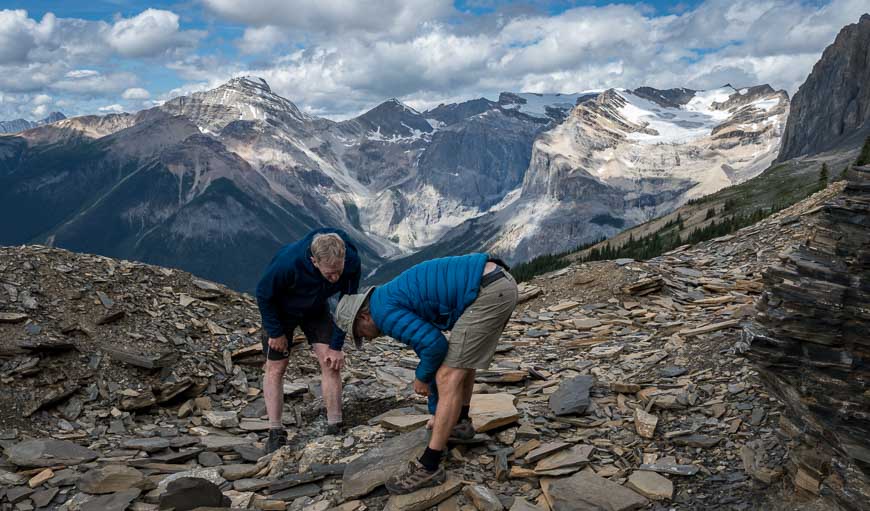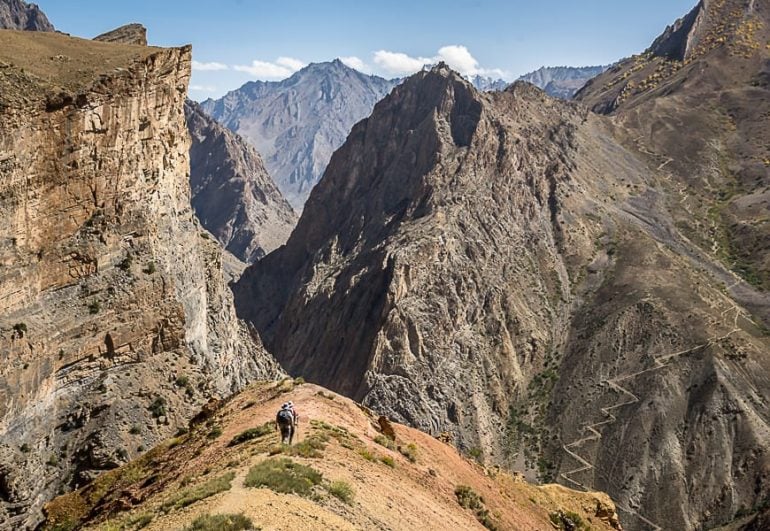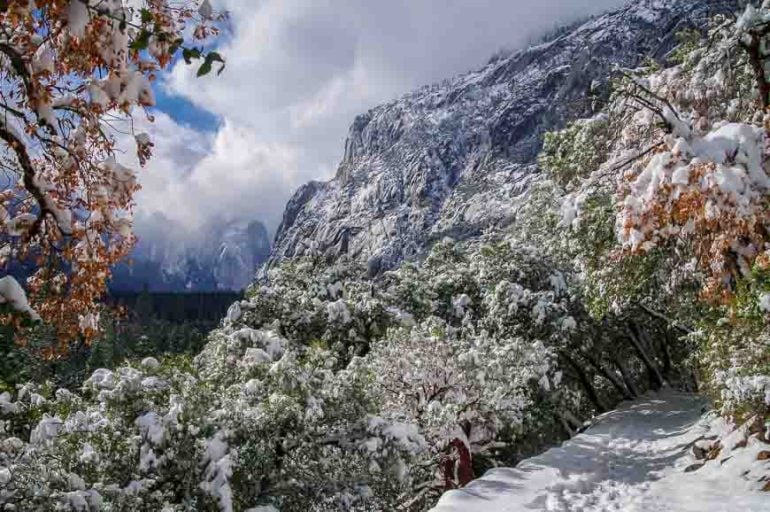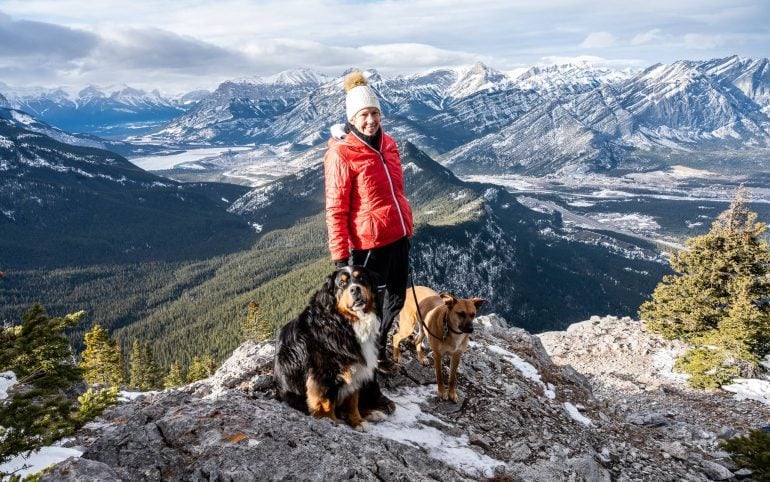Burgess Shale Hike in Yoho National Park
The Burgess Shale hike in Yoho National Park had been on my radar for years. Most of the appeal – before I actually did it, was the fact that the Walcott Quarry where the Burgess Shale fossils are located, is a UNESCO World Heritage Site and I love checking out UNESCO sites.
However, despite the fact that I have a degree in geology, I confess that I am not overly interested in fossils, mildly interested would be a better description.
My husband John, is a whole other matter. He is a geologist and a wildly enthusiastic one at that, so when asked if he’d like to do the Burgess Shale hike, his answer was an unequivocal YES. He and I joined my friends Gemma and JR from Off Track Travel for a memorable day of hiking and fossil hunting.
This post includes some affiliate links. If you make a purchase via one of these links, I will receive a small commission at no extra cost to you. Thank you very much for your support.
Burgess Shale hike summary
Distance: 22 km (13.7 miles) return.
Elevation gain: 825 metres or 2,707 feet.
Time needed: You need a full day to do the Burgess Shale hike. And by a full day, I mean 11 hours. I couldn’t imagine that our group of four dedicated hikers and our very fit guide, Ardele, could take anywhere near the full time allotment to get up and down, but we did! And the time flew – perhaps because we had a great guide, or a combination of a great guide and the hike being both visually and intellectually interesting.
Time at the quarry: You get an hour at Walcott Quarry to hunt for fossils.
Permit: You require a valid national parks pass to do the Burgess Shale hike.
Reservations: You can make reservations for the guided Burgess shale hike starting on January 21st, 2025 at 8 AM MST.
Dogs: Not allowed.
Children: Kids under 8 are not permitted – and those between 9 and 16 years of age must be accompanied by an adult.
Don’t forget: Take lots of water and perhaps a water filter if you want to refill water bottles at Yoho Lake. Take enough food to cover off an 11- hour day in the mountains.
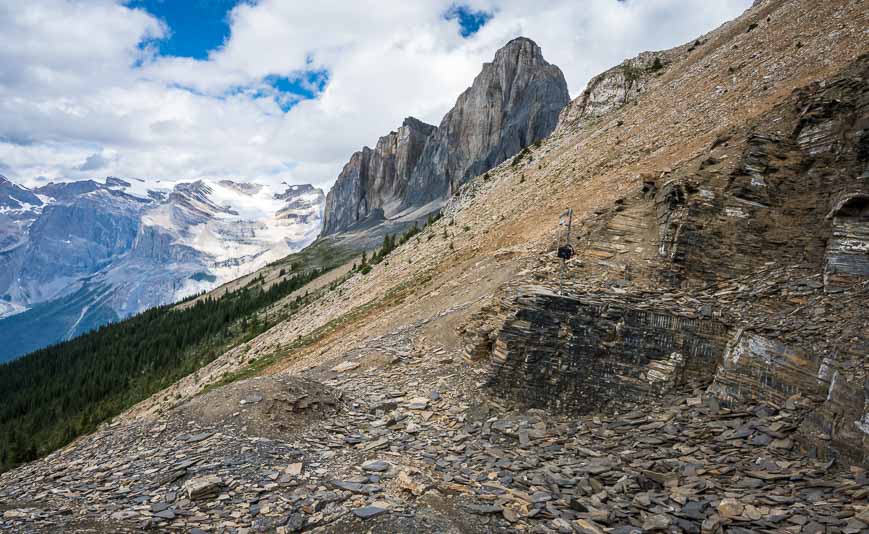
Would you like to save this?
Is the Burgess Shale hike for you?
If you’re wondering whether the Burgess Shale hike is for you be sure to read the information on the Parks Canada website. It’s a hike with quite a few rules in place for the welfare of all.
For starters you must be able to hike 22 km (13.7 miles) return with an elevation gain and loss of 825 m or 2,707 feet.
It is not recommended that you make a reservation if you have recurring knee, back or ankle injuries because of several steep sections. Kids under eight are not permitted on the hike and nor are any pets.
If you hike regularly, you won’t find the trail to be a problem at all. And the pace is such, that you can catch your breath at the numerous stops that are made to discuss the fossils along the way.
You need to reserve your spot on the guided hike in advance. Prices are $70 per adult, $35 per youth and $59.50 for those that are 65 or older. There are also reservation fees. The hike is only offered in the summer months when the trail is free of snow.
How the Burgess Shale hike unfolds
The hike to the Walcott Quarry where the Burgess Shale is located, starts in the Takakkaw Falls parking lot at 7 AM sharp. It’s easy to spot the white Parks Canada van in the mostly empty parking lot. After going through introductions, we also reassured Ardele, our delightful guide that we were carrying the required items listed on the Parks Canada website. Then we were off.
It’s a stiff climb after you hike past the Whiskey Jack Wilderness Hostel, but at least you’re rewarded with an excellent view of Takakkaw Falls. The falls are Canada’s second highest, boasting a total drop of 373 m (1,224 feet), and a main drop of 254 m (833 feet). They are impressive from any angle.
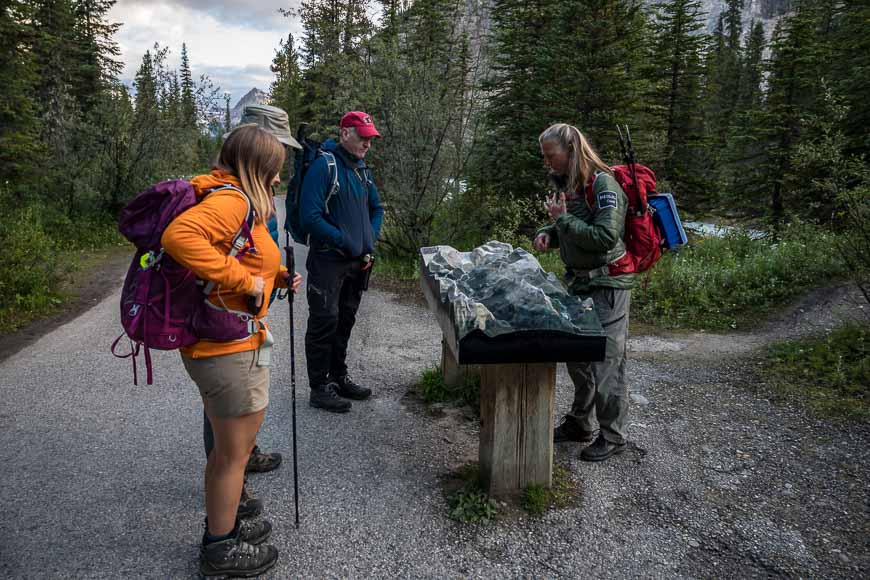

The steepest part of the Burgess Shale hike is at the beginning (and end) of the day. Despite starting in near freezing temperatures, we were peeling off layers 15 minutes into the hike. By the time we reached scenic Yoho Lake at the 4.1 km mark we were ready to disrobe further and stop for a break.
Note: I think you’ll find hiking poles very helpful on the descent at the end of the day as it’s both steep and slippery. I recommend collapsible trekking poles.
What I liked about the way the day unfolded was the fact it wasn’t all completely scripted. We got into thought-provoking discussions on the Burgess Shale on our breaks, but we also had time to wander around and take photographs.
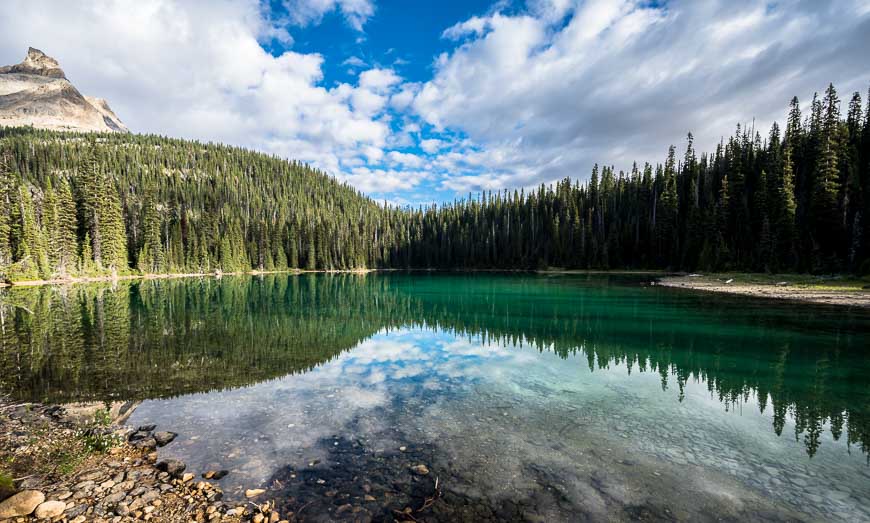
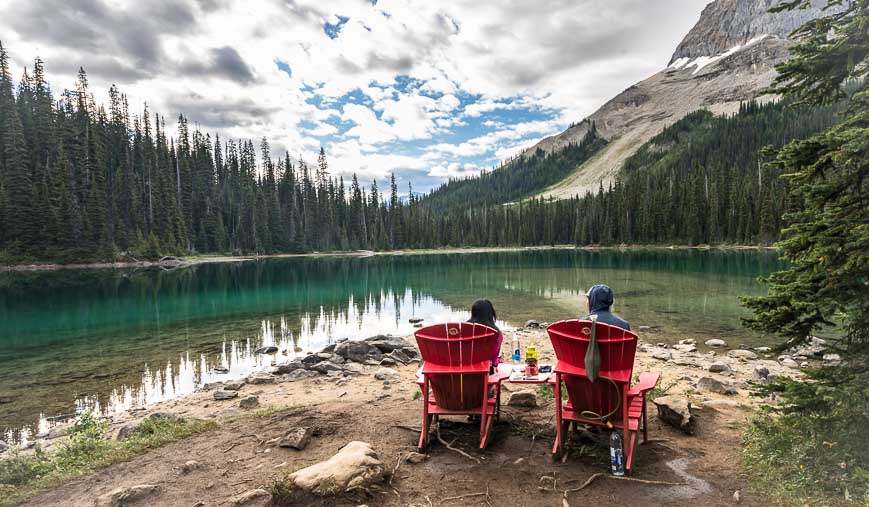
From Yoho Lake, it’s another 6.7 km on the Burgess Shale hike to reach the turnoff to the Walcott Quarry. Going forward, this part of the hike was the most scenic and the grade was mostly gentle.
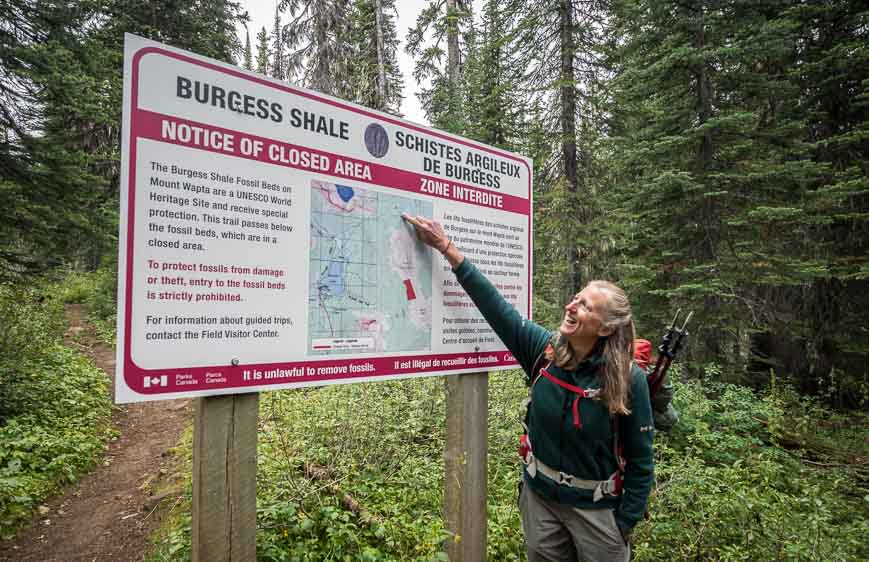
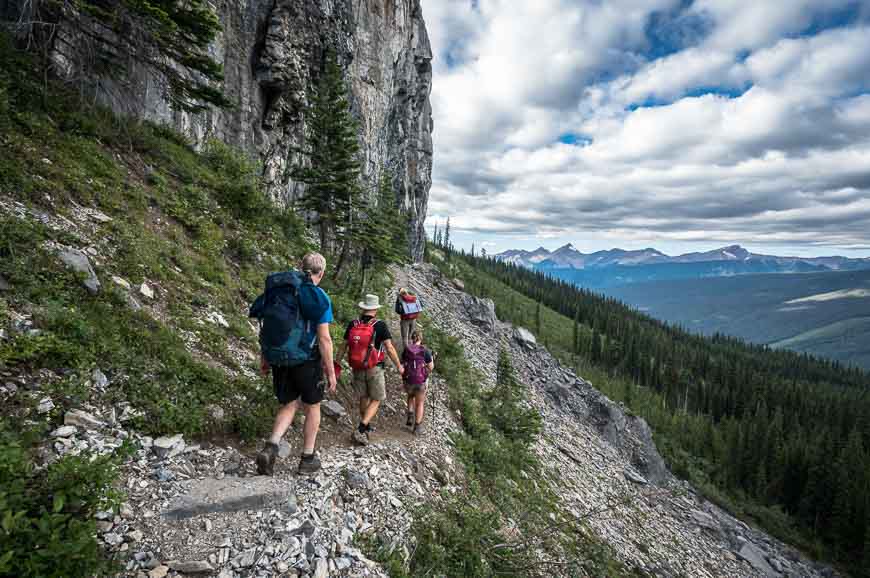
We enjoyed a long break on the Burgess Shale hike – partway along the Wapta-Highline Trail with Emerald Lake as a backdrop thousands of feet below us. At this point Ardele took us through a fun exercise on the timeline of the Burgess Shales starting from when the earth was formed.
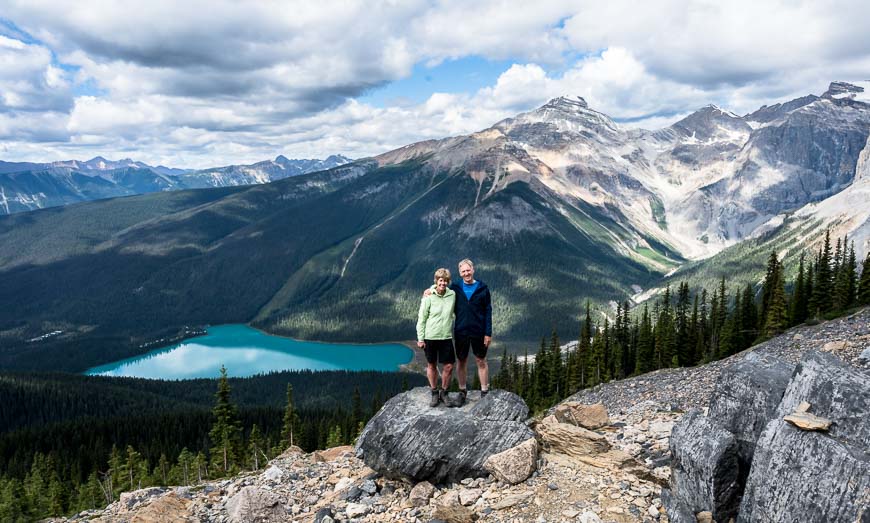
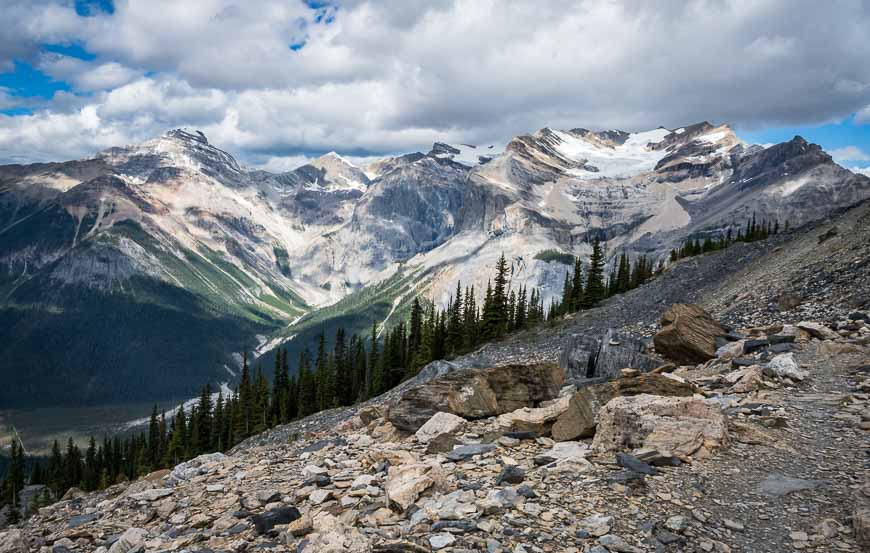
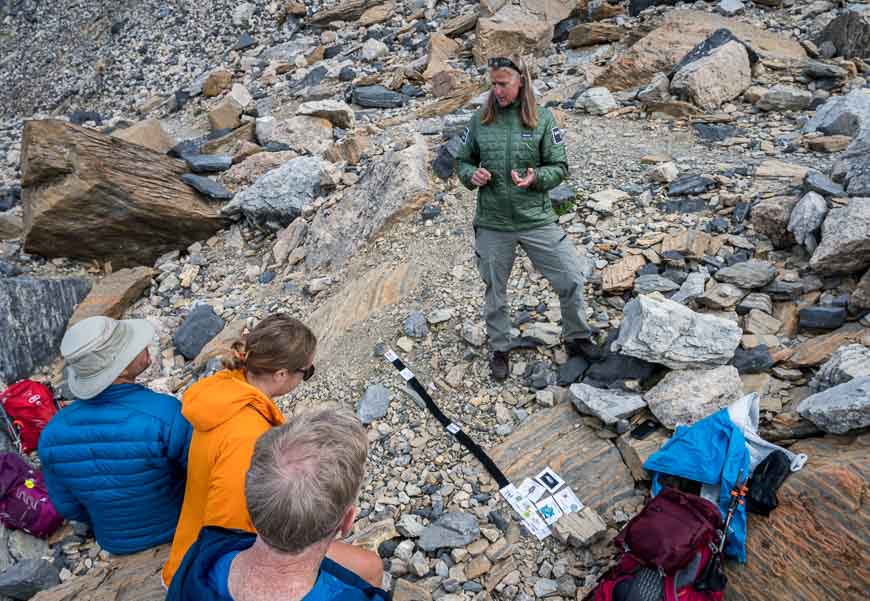
Our next stop on the Burgess Shale hike was the Walcott Quarry itself, accessed via a steep switchback that climbed 130 m over just half a kilometre. This is the section that is completely out of bounds to the general public. It’s closely monitored.
As you start the steep hike look up to the ridgeline. There were over 40 mountain goats John was able to count through his camera. Apparently they are a common sight here.
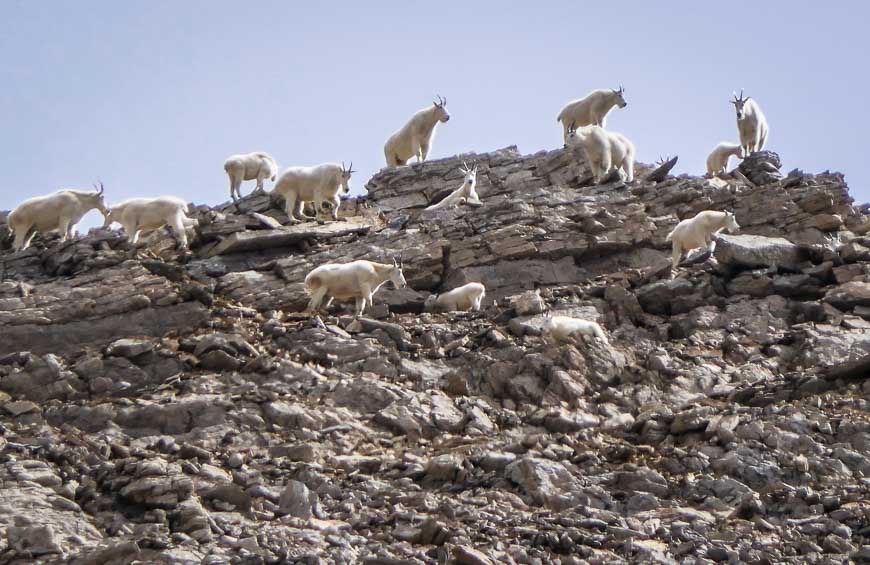
John, a geologist describes the Burgess Shale in more detail
There is a place in the Rocky Mountains of British Columbia where a very special rock formation has earned the distinction of being named a UNESCO World Heritage Site. This formation called the Burgess Shale is over 500 million years old.
It is one of the very few spots in the world where critters of the time are uniquely well-preserved, so well-preserved in fact, that through special imaging techniques, soft tissue such as internal organs, eggs and even stomach contents have been identified. This window into life a very long time ago answers many questions about the evolution of life but begs many more.
What is the Burgess Shale?
Well, Burgess was a guy, apparently a deputy Minister of the Interior no less, in the 1880s and a mountain was named in his honour. Shale was not a guy but a generic name of rock that used to be mud, often at the bottom of a sea. As more sediment piled on top of the mud, (we are talking kilometres worth) the pressure and some heat turned the mud into rock.
Shale is typically dark, soft, and often breaks into thin plates. What is cool about the Burgess Shale fossil site is that a whole lot of critters were trapped in the mud and quickly covered so that they didn’t get eaten or roughed up.
They did get flattened though and that is why when you break open the shale plates you might just find a critter. Through a quirk of geology, these fossils survived the deep burial and eventually were pushed up over 2 kilometres into the air forming part of the Rocky Mountains.
What happened during the Cambrian geologic period
So, about these critters. Well, life on earth at that time was very different. In fact, the Cambrian geologic period is thought of as the explosion of life marking the transition from mostly uni-cellular algae to more complex life forms.
It isn’t quite that simple because there is now evidence that in the period immediately prior (the Ediacaran – an aboriginal name for some hills in Australia) there was some complex life with nice soft things (softies) munching on algae.
It is hypothesized that increasing levels of oxygen (thanks to the algae) spurred evolutionary adaptions including perhaps development of sight or sensing, leading to awareness and predation.
Think of it this way. Life was good as a softie and then something came along and started eating your friends and family. Not so good! Well, maybe it’s time for an exoskeleton, or armor or legs or maybe your own set of eyes. Maybe burrow into the mud and get out of sight.
That onset of predation might explain all the adaptations that gave you a little better chance of not getting eaten. That moved us from algae and softies to burrowing, crawling and swimming things.
It seems Mother Nature tried out quite a few different configurations, some of which are quite odd looking. Ranking way up there on the odd scale is Anomalocaris which seems like a combination of a centipede, plumbing fixtures, some old fan blades, the tail of a bird and two eyes. It did not seem to be a model for the ages and it wasn’t.
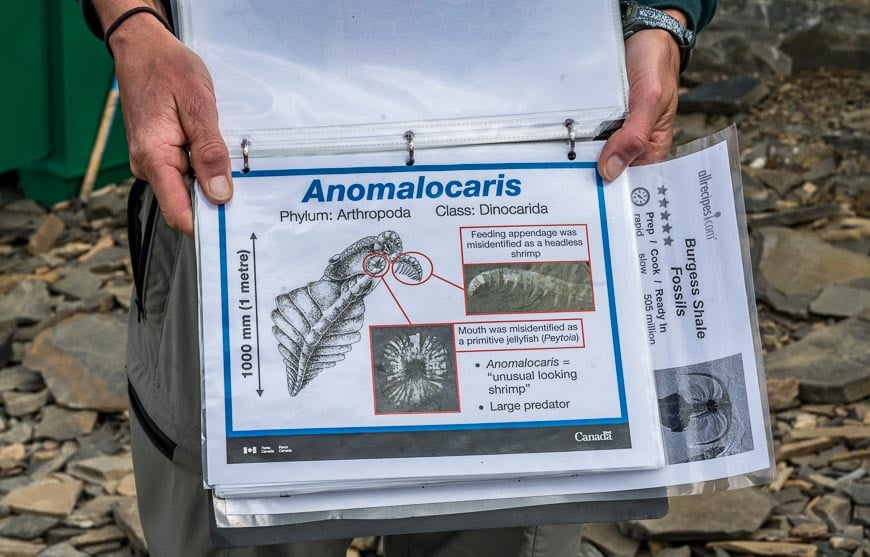
At the fossil site, trilobites are fairly common. A trilobite looks a little bit like a horseshoe crab. Turn over a few rocks at the Walcott Quarry and very quickly you will start finding them. It’s a lot of fun but also a privilege to see some of Earth’s early beings.
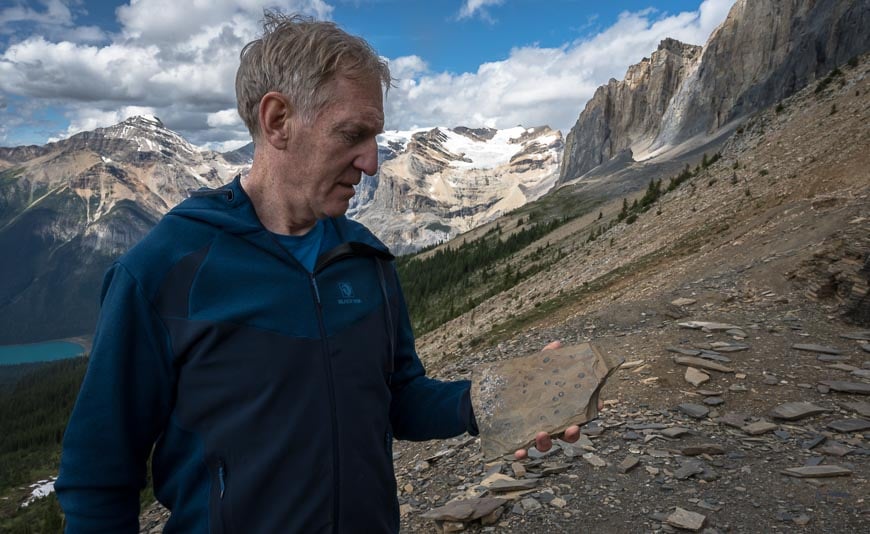
My experience at the shale beds
We spent just over an hour in the Walcott Quarry. Onsite, Ardele pulled out all sorts of example of Burgess Shale fossils and then sent us on our way to pick through the rock. It’s already been picked over with literally tens of thousands of fossils sent out to museums.
We all had fun fossil hunting – in part because everyone was successful at finding something. It’s very rewarding to pick up a piece of rock, flip it over and discover you’re holding a life-form that was alive some 500 million years ago!
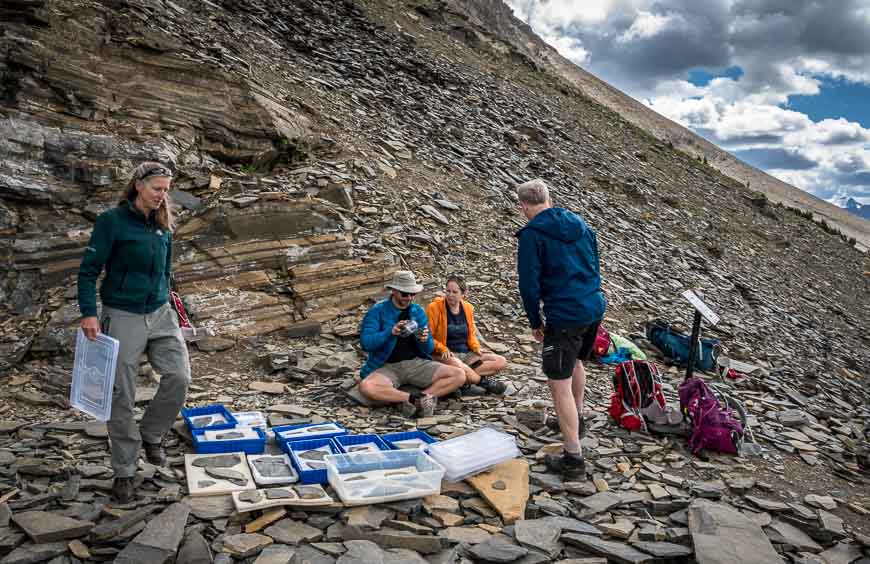
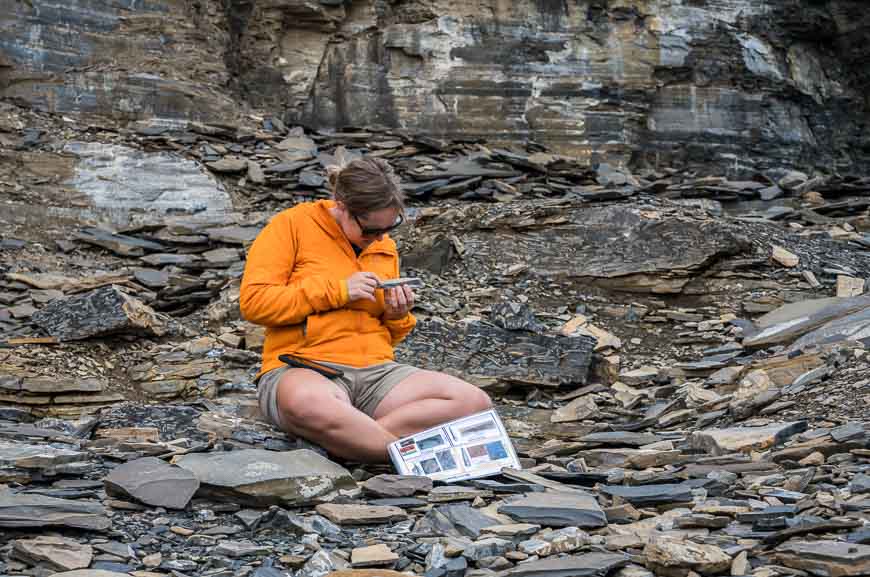
Where else can you find Burgess Shale fossils?
The Walcott Quarry is one of the most exceptional sites in the world to find Burgess Shale fossils. But there are others, including two in British Columbia. You’ll find more fossils at the Stanley Glacier site in Kootenay National Park and on Mount Stephen near Field. There are guided hikes to both available that are shorter and easier than the Burgess Shale hike to Walcott Quarry.
In China, the Maotianshan Shales are another noteworthy example. Elsewhere you’ll find excavated fossil beds in Greenland, Australia, Utah and Nevada.
Recommended reading: Stanley Glacier Hike in Kootenay National Park
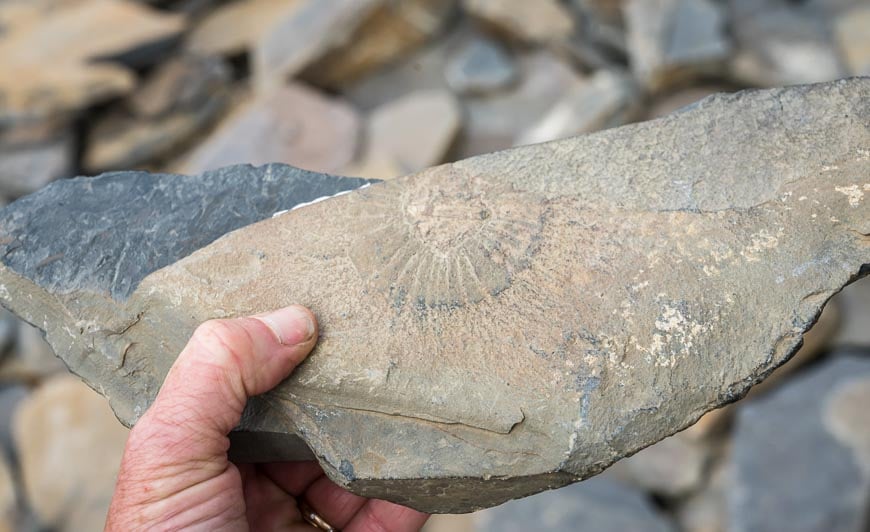
Where to stay near the Burgess Shale hike
With the Burgess Shale hike starting promptly at 7 AM, chances are you won’t want to drive far. John and I stayed in the Takakkaw Falls walk-in campsite accessed from the same parking lot you meet the guide at near Takakkaw Falls.
You can now reserve the Takkakaw Falls walk-in campsite. In 2025, online reservations open on Monday, January 27 at 8 AM MST.
Not all campsites come with a fire pit or the view we got, but they’re all private. You’ll also find pit toilets, potable water and even large wheelbarrow-like contraptions for moving your gear. You self-register at a kiosk and pay with cash or a credit card.
If you want a roof over your head, the Whiskey Jack Wilderness Hostel just a few minutes’ walk from the Takakkaw Falls parking lot would be a great choice – if you don’t mind dorm rooms.
Cathedral Mountain Lodge, a 15-minute drive away is a lovely spot to spend a night or two. Close by it are two campgrounds – the non-reservable, first come, first served Monarch Campground and the reservable Kicking Horse Campground.
The town of Field is also a short drive away. It offers an assortment of B&B’s. I’d also recommend a stay in Emerald Lake Lodge – a 30-minute drive away.
Lake Louise is another overnight option
The drive between the start of the Burgess Shale hike in the Takakkaw Falls parking lot and Lake Louise is about 30 minutes so you could easily spend a night in Lake Louise without having to get up at some ungodly hour.
Some options include the Paradise Lodge and Bungalows – from which you can walk to Lake Louise without the hassle of parking.
The Lake Louise Alpine Hostel is a great choice if you’re watching your budget.
And if you’re after a high end choice with a great restaurant, check out The Post Hotel and Spa.
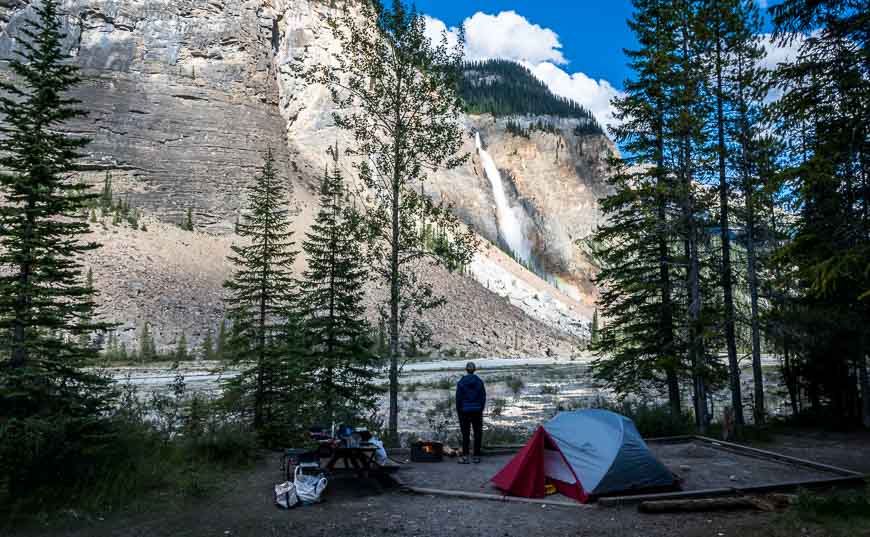
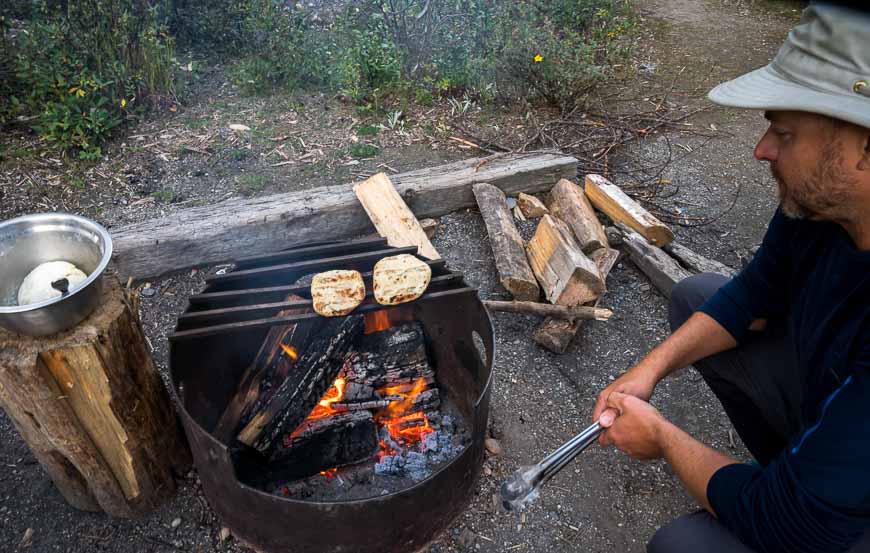
Final thoughts on the Burgess Shale hike
I made the comment at the beginning of this post that the appeal to doing the guided tour was to see another one of Canada’s UNESCO sites. I surprised myself on a couple of fronts with regards to this outing and I think I have Ardele to thank for that.
Not only did l thoroughly enjoy the Burgess Shale hike itself, I loved learning about the Burgess Shale fossils. Ardele brought the fossils to life and made the day extremely interesting.
In all honesty, I cannot believe it was 6 PM when we showed up in the parking lot. The time flew by – and yet never did any of us feel rushed. It was a real thrill to be out hunting for fossils – and knowing that chances were very high that you’d find something.
If you’re really not that into fossils either, start with one of the shorter tours like the Stanley Glacier. I bet it surpasses all expectations and in short order you sign up to do this one. I highly recommend it.
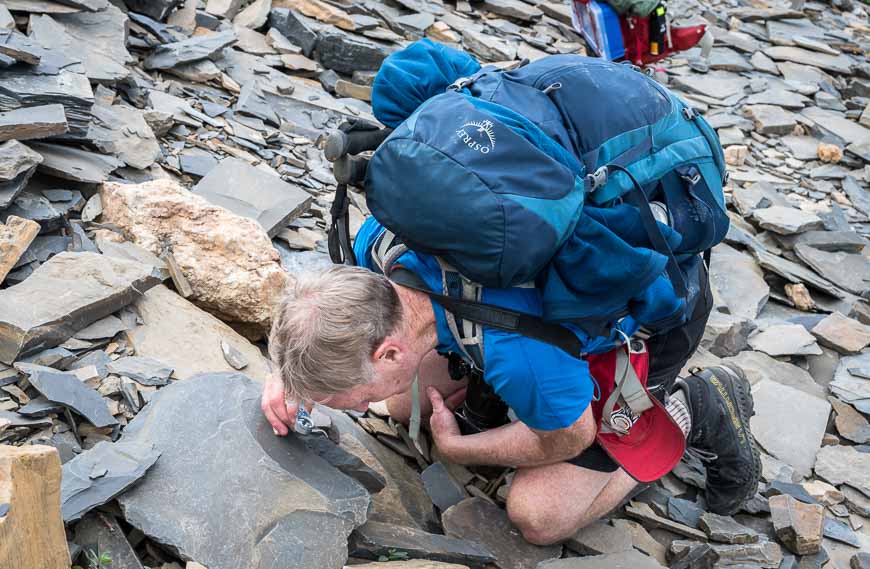
Further reading on things to do in Yoho National Park
- The Lake McArthur Hike in Yoho National Park
- Hiking the Iceline Trail near Field, BC
- Paget Lookout – Paget Peak Hike in Yoho National Park
- The Lake O’Hara Alpine Circuit, Yoho National Park
- Wapta Falls Hike or Snowshoe in Winter
Thank you to Tourism Golden and Parks Canada for hosting me.
Click on the photo to bookmark to your Pinterest boards.

